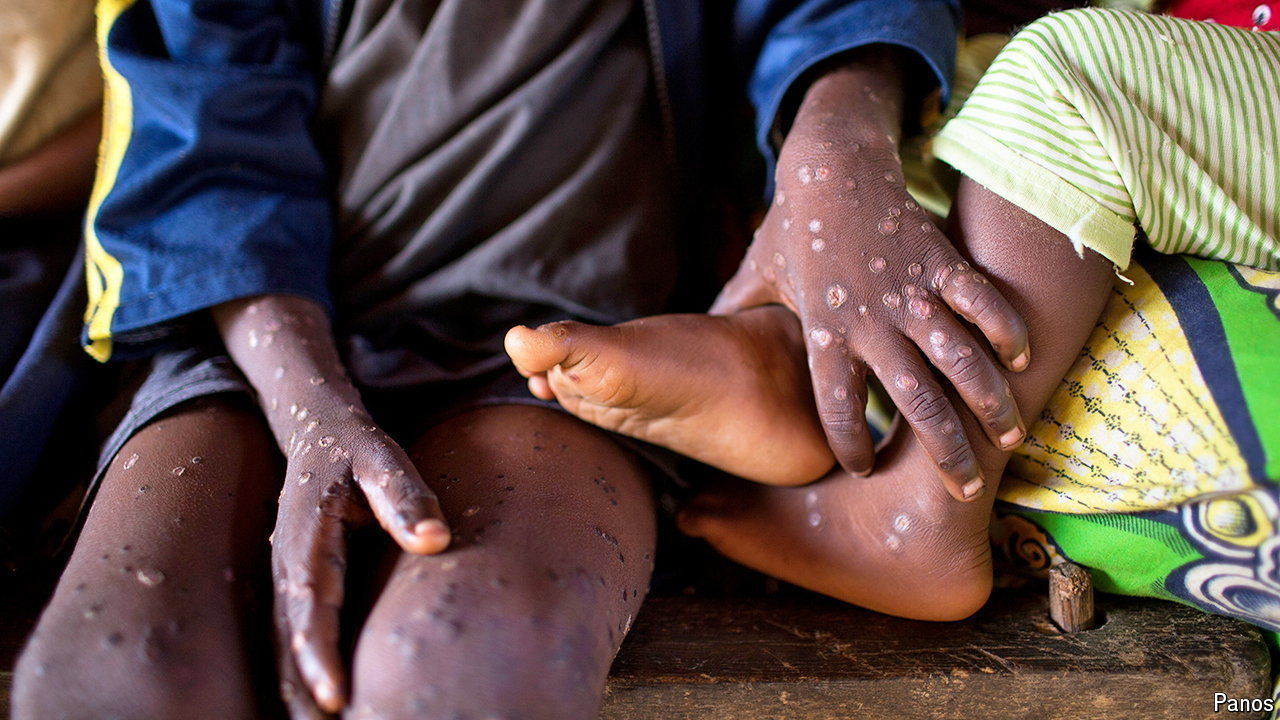
Mpox outbreak endangers DR Congo’s and its neighbors’ regular business
In an effort to stop the Mpox virus from spreading further from its epicenter in the Democratic Republic of the Congo, Southern African nations have instituted emergency measures that could impede the recent recovery from the devastation caused by Covid-19.
Even though there have been cases in 110 nations since May of last year, the Africa Centre for Disease Control and Prevention (Africa CDC) said last week that there have been around 8479 cases and 401 deaths from mpox since January 2024 on the continent.
However, the DRC has been identified as the outbreak’s hotspot in Africa, accounting for 97% of the infections.
In April 2024, the Africa CDC convened a high-level emergency meeting in the Democratic Republic of the Congo (DRC) to advise nations on emergency measures and to spearhead a vaccine drive.
The Africa CDC stated at the time that “mumps is preventable and manageable, and treatment for both mild and severe cases is available.”
The World Health Organization (WHO) has assessed that the recent outbreak that has neighbors on edge could be caused by a novel virus type that spreads more quickly.
The Director of the National Mpox Program (PNLM) in the Democratic Republic of the Congo, Dr. Shungu Lushima, stated that the country has seen a rise in the number of instances of the viral disease.
To far, instances have been reported throughout Africa in Egypt, Benin, Liberia, Ghana, South Africa, Mozambique, Cameroon, Nigeria, Sudan, and Ghana.
The Department of Health in South Africa encouraged people to practice maximum cleanliness and released a warning about the symptoms of mpox on Wednesday.
Six new Mpox cases have been confirmed by the South African Department of Health, bringing the total number of illnesses to 16 since the outbreak started, along with three deaths that have been reported.
As part of the Pathogen Access and Benefit Sharing (PABS), they underlined the necessity of cross-border integrated disease surveillance and coordinated provision of medical countermeasures, including diagnostics, vaccines, and medicines.
The longest land border between the DRC and Angola, which has increased border surveillance to keep the disease “inviolable order to prevent the country from reaching,” issued similar rallying calls on safety measures on Tuesday, according to a Ministry of Health statement.
It stated that Angola was keeping an eye on how the disease was spreading to its neighbors and, as a result, was immediately advising people to take preventative steps, like regularly washing their hands with soap and water or sanitizing them with alcohol gel, and refraining from hunting or consuming the meat of rodents like rats, mice, and squirrels.
Contrary to allegations that the Cabinda province enclave had documented two instances of the new strain, the Angolan government claims that there has not yet been a case reported within its borders.
The longest land border in Africa, spanning 2,500 km, separates Angola with the Democratic Republic of the Congo. Provinces like Lunda Norte in Angola, known for its abundant diamond reserves, shares a 770 km portion of this border with the DRC’s Kassai, Kassai Central, Lualaba, and Kwango provinces. All of them are porous, and people frequently cross them illegally in quest of minerals and other goods for trade.
The border between Angola and the Democratic Republic of the Congo (DRC) is continually susceptible to incidents of irregular migration, smuggling, and human trafficking, according to the International Organization for Migration in Angola (IOM). This is because there are insufficient human and technological resources to meet the needs of the vast area’s surveillance.
Approximately 600 deaths were reported in the DRC from mpox last year. Data released this week by the Ministry of Health indicated that since the beginning of the year, 410 deaths had occurred in the Congo, which is now recognized as the disease’s endemic zone.
This African Union organization claims that between February 2023 and February 2024, the Democratic Republic of the Congo documented over 19,000 cases, 1,000 deaths, and one out of every ten deaths involved children under the age of five.
The rise in primarily sexual transmission—most notably through prostitution—and the high death rate among youngsters under the age of fifteen are of particular concern to researchers.
Officials in the Democratic Republic of the Congo say they are counting on vaccination after Dr. Roger Kamba, the minister of health, approved two shots that should come in the coming days.
“Disease cases are expanding globally. Of course, we can vaccinate everyone, but we’ll start where there are multiple cases.
“Motivation is underway to get the novel vaccination that the minister has approved. Dr. Kamba emphasized, “We’re waiting on the vaccine to arrive.”
He asked people to maintain their composure and abstain from consuming any dead animals, even household pets. The putative virus reservoirs, monkey and bush meat, are especially well-liked in the Democratic Republic of the Congo.
The disease mumps, formerly known as monkeypox, is brought on by an infection with the monkeypox virus. The smallpox virus and this virus belong to the same family.
According to a WHO advisory, those who have mpox frequently experience a rash in addition to other symptoms like fever, rash, and swollen lymph nodes. It takes around 21 days for an infection to incubate, or for symptoms to appear.
The disease is rare, according to the Africa CDC, but because it is zoonotic—it affects both humans and animals—it can spread quickly.
It is mainly found in tropical rainforest regions of central and west Africa. According to the Africa CDC, people can contract it by coming into intimate contact with an infected person or animal or by coming into contact with contaminated objects including bedding, towels, and clothing. The DRC is where it was initially found in the 1970s. After a few days of symptoms, it might go away, but occasionally it might become fatal. 3.6 percent at most of people afflicted pass away.
For example, the government of the Democratic Republic of the Congo (DRC) in North Kivu is working with the World Health Organization (WHO) and other UN organizations to implement a number of preventive measures, beginning with awareness and hygiene.
The WHO and DRC Ministry of Health are jointly undertaking a mission “to assess the situation” as the WHO is concerned about new patterns of virus transmission during the waiting period for the large-scale vaccination program to begin.
The report continues, saying that “the risk of Mpox spreading to neighbouring countries and worldwide appears significant” and that “these new patterns of sexual transmission now raise additional concerns about the continued rapid expansion of the epidemic in the country.”
What you must do is
- If you have been diagnosed with mpox or fear you may have it, stay inside your house and get medical attention only.
Steer clear of domestic or wild animals. Wash your hands frequently with soap and water. - If possible, isolate suspected or confirmed cases of monkeypox from other family members in a separate room.
- When practical, people infected with monkeypox should wear surgical masks, especially if they are experiencing respiratory symptoms like coughing, shortness of breath, or sore throats.
To minimize the risk of contact with others, it is recommended to wear disposable gloves to prevent direct contact with lesions and to dispose of them after each use. Additionally, laundry (including clothes and linen), dishes, and any contaminated surfaces should be cleaned with hot water, detergent, and disinfectant (0.5 percent sodium hypochlorite solution). Finally, it is important to emphasize the importance of hand hygiene, which includes washing hands with soap and water or using alcohol-based sanitizer.
All Categories
Recent Posts
Tags
+13162306000
zoneyetu@yahoo.com



